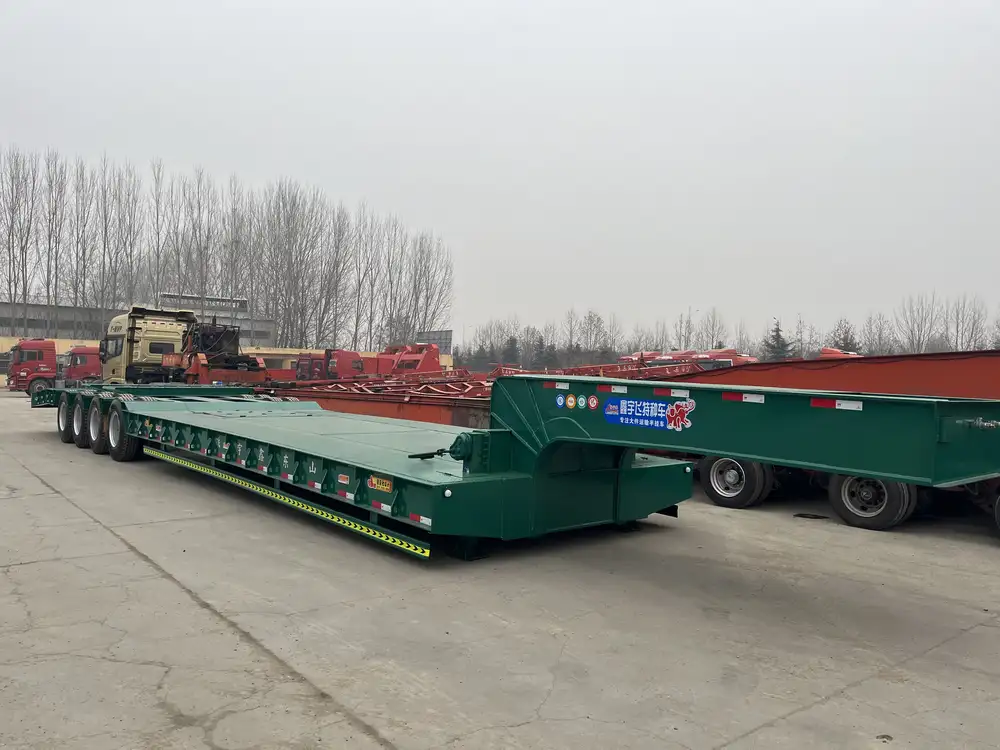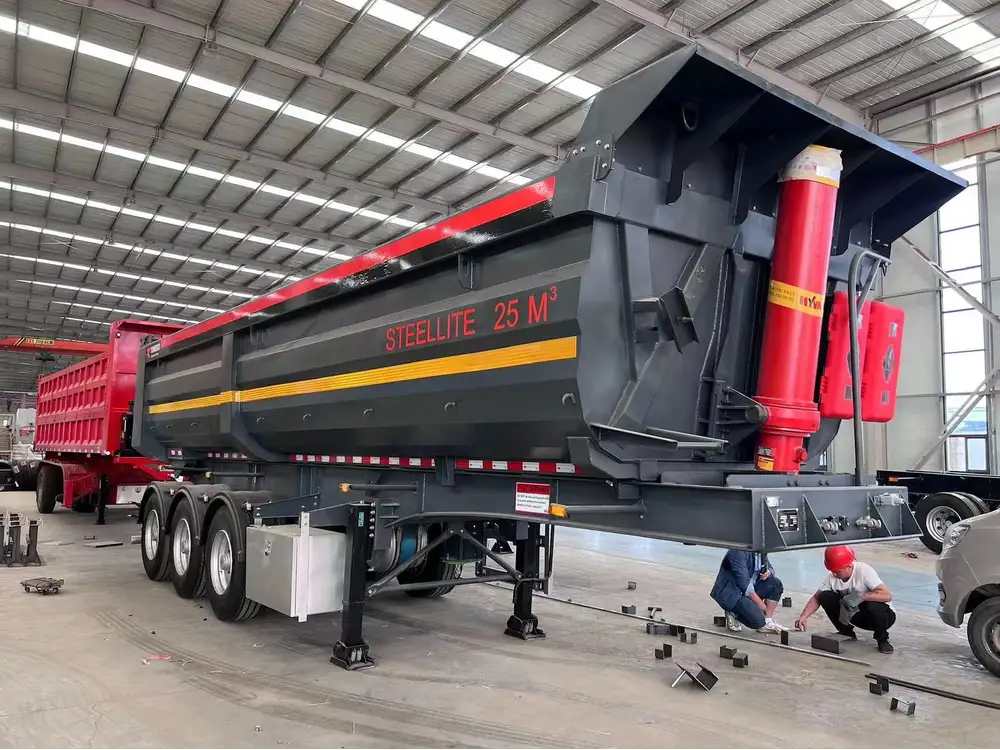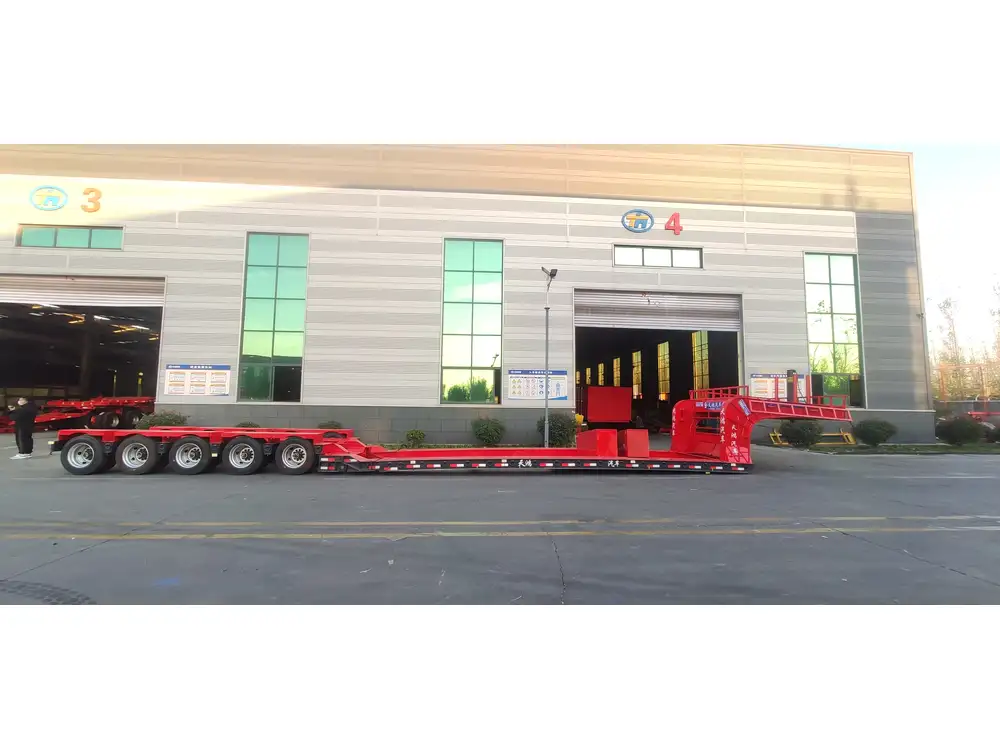Refrigerated semi-trailers, commonly known as reefer trailers, are vital components in the cold chain logistics system, ensuring the safe transport of perishable goods. To fully appreciate their functionality, one must delve into the intricate workings of these robust vehicles, particularly focusing on the sources of power that keep them operational.
What Powers a Refrigerated Semi-Trailer?
At the heart of refrigerated semi-trailers lies an advanced cooling unit, responsible for maintaining low temperatures to preserve food and pharmaceuticals during transport. Understanding what these cooling units run on can illuminate various essential aspects of the refrigerated transport sector.
1. Diesel Engines
The most traditional and widely used power source for refrigerated trailers is diesel fuel. The diesel engines employed in reefer units operate independently of the tractor (the main truck) and are specifically designed to maximize efficiency and performance.
- Advantages of Diesel Engines:
- High Power Output: Diesel engines offer substantial horsepower, making them capable of driving compressor systems efficiently.
- Economical for Long Distances: Diesel tends to be more fuel-efficient over long hauls, which is crucial for minimizing operational costs.
- Durability and Reliability: Diesel-powered units are designed for rigorous operations, ensuring longevity and consistent cooling performance.
| Feature | Diesel Engine |
|---|---|
| Power Output | High |
| Fuel Efficiency | Excellent for long hauls |
| Reliability | Very high |
| Operational Cost | Moderate |

2. Electric Power Systems
In recent years, the reefer trailer industry has seen a shift towards electric-powered refrigeration systems, particularly with the rising demand for environmentally friendly solutions. Electric units can draw power from various sources, including:
Battery-Powered Systems: Rechargeable batteries are used to operate the refrigeration unit independently of the tractor. These systems are particularly beneficial for short hauls or urban deliveries.
Plugged-In Refrigeration: When stationary, these systems can be powered via a standard electrical outlet at distribution centers or docks, allowing for continuous operation without idling.
Hybrid Systems: Combining both diesel and electric sources, hybrid systems allow flexibility with energy use, enhancing efficiency and supporting regulatory compliance regarding emissions.
| Power Source | Electric System |
|---|---|
| Longevity of Cooling | Very high |
| Environmental Impact | Minimal |
| Operational Cost | Potentially lower |
| Dependency on Downtime | Low |
3. LP Gas (Liquefied Petroleum Gas)
LP gas remains a lesser-known option for powering refrigerated trailers but is still utilized in certain cases, particularly where emissions standards are stringent. The benefits of LP gas include:
- Lower Emissions: LP gas systems generate fewer harmful emissions than traditional diesel-powered units.
- Rapid Cooling Capability: These systems can achieve lower temperatures more quickly, crucial for transporting heat-sensitive products.
| Feature | LP Gas Systems |
|---|---|
| Emissions | Low |
| Cooling Efficiency | High |
| Fuel Availability | Moderate |
Factors to Consider When Choosing a Refrigerated Semi-Trailer
When determining which type of power source is optimal for refrigerated semi-trailers, several factors come into play.

Maintenance Costs
Each power source presents unique maintenance needs. Diesel engines often require more regular servicing due to their complexity, while electric systems may have maintenance focused on battery life and electrical components.
Operational Efficiency
Examining load capacity versus fuel efficiency can yield insights. Diesel engines typically perform better in terms of long-distance delivery efficiency, while electric systems shine during urban runs where short distances dominate.
Environmental Compliance
With increasing regulations on emissions, choosing a power source that aligns with sustainability efforts—like electric or LP gas—is becoming essential. This consideration impacts operational costs and long-term viability.

Regulatory Compliance
Transportation regulations vary by region, impacting the choice of power source. For instance, some urban areas have restrictions on diesel idling, making electric or hybrid solutions preferable.
The Importance of Insulation in Refrigerated Semi-Trailers
Beyond power sources, insulation quality is a critical factor in the overall performance of refrigerated semi-trailers. Effective insulation minimizes thermal exchange, crucial for maintaining the desired temperature during transport.
Types of Insulation
- Polyurethane Foam: Commonly used due to its superior thermal insulation properties.
- Fiberglass: Offers decent insulation but may not perform as well as polyurethane in extreme temperatures.
- Vacuum Panels: Cutting-edge technology that provides excellent insulation without the added weight.
| Insulation Type | Thermal Resistance |
|---|---|
| Polyurethane Foam | Excellent |
| Fiberglass | Moderate |
| Vacuum Panels | Superior |

The Role of Temperature Control Systems
Temperature control systems within refrigerated trailers are not merely optional; they are fundamental tools for success in the cold chain.
Monitoring Technologies
Advanced temperature monitoring systems can help operators track the cooling unit’s performance and ambient temperature throughout transportation. Some popular technologies include:
- Thermal Sensors: Provide real-time data and alert operators in case of temperature deviations.
- GPS Tracking: Some systems integrate GPS to monitor the trailer’s location, align optimal routes, and adjust temperatures based on the delivery environment.
Benefits of Enhanced Temperature Control
- Product Integrity: Maintaining precise temperature ranges is vital for preserving food safety and quality.
- Regulatory Compliance: Adhering to temperature regulations can protect businesses from fines and product recalls.

Choosing the Right Reefer Trailer for Your Needs
When considering investing in a refrigerated semi-trailer, it is necessary to weigh various criteria.
Key Considerations
- Payload Capacity: An optimal trailer should align with the business’s delivery capacity needs.
- Temperature Range: Ensure the cooling unit can effectively meet the temperature requirements for the types of products being transported.
- Fuel Type: Select a trailer with a power source that matches your operational strategy and financial considerations.
| Criteria | Considerations |
|---|---|
| Payload Capacity | Match delivery needs |
| Temperature Range | Fit product requirements |
| Fuel Type | Determine costs and efficiency |
Conclusion
Navigating the complexities of refrigerated semi-trailers—spanning power sources, insulation, temperature control, and suitability based on business needs—is crucial for maintaining a competitive edge in today’s logistics landscape. Whether opting for traditional diesel engines, exploring the benefits of electric systems, or considering LP gas options, understanding the operational framework of these trailers enables businesses to make informed decisions that ensure product integrity from point A to point B. As the industry evolves with an emphasis on sustainability and efficiency, staying ahead of emerging technologies and trends in refrigerated transport will be paramount for success.



